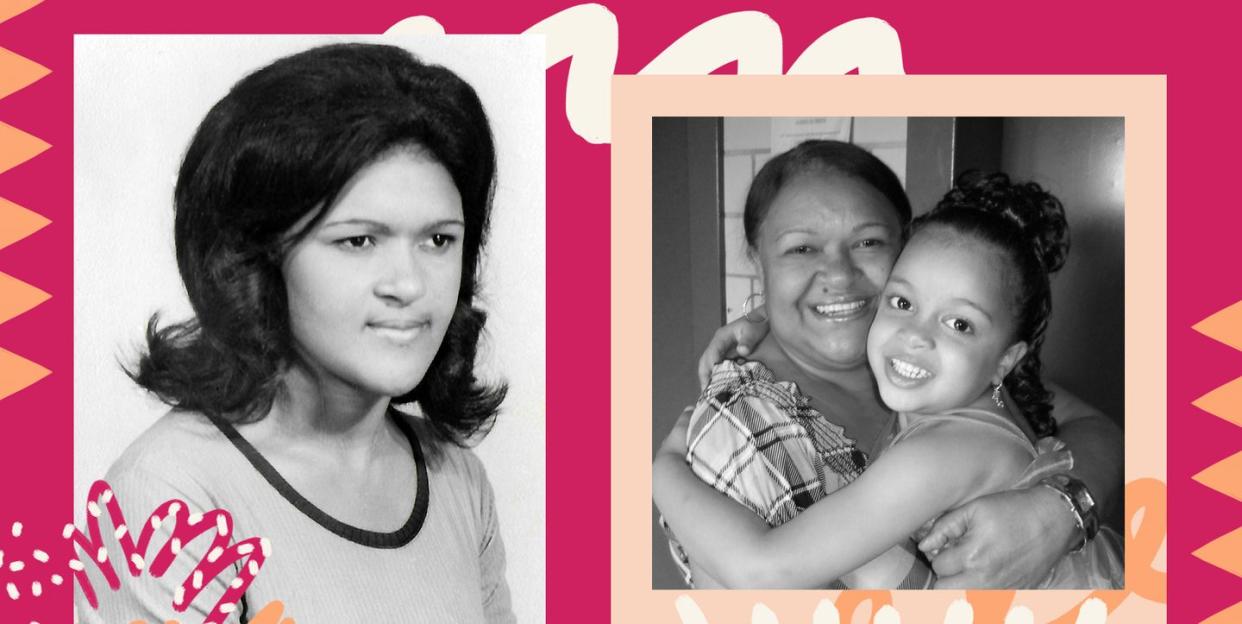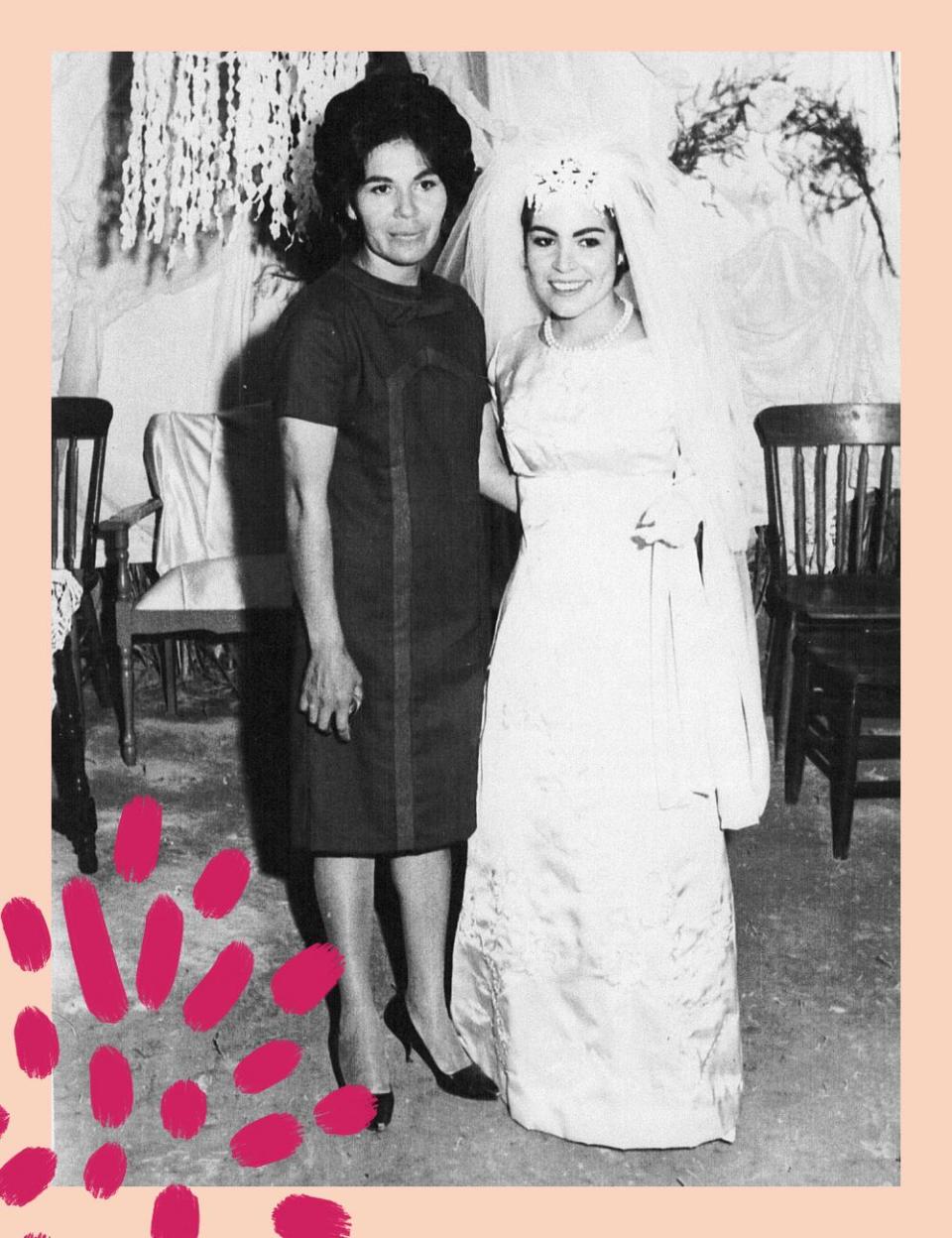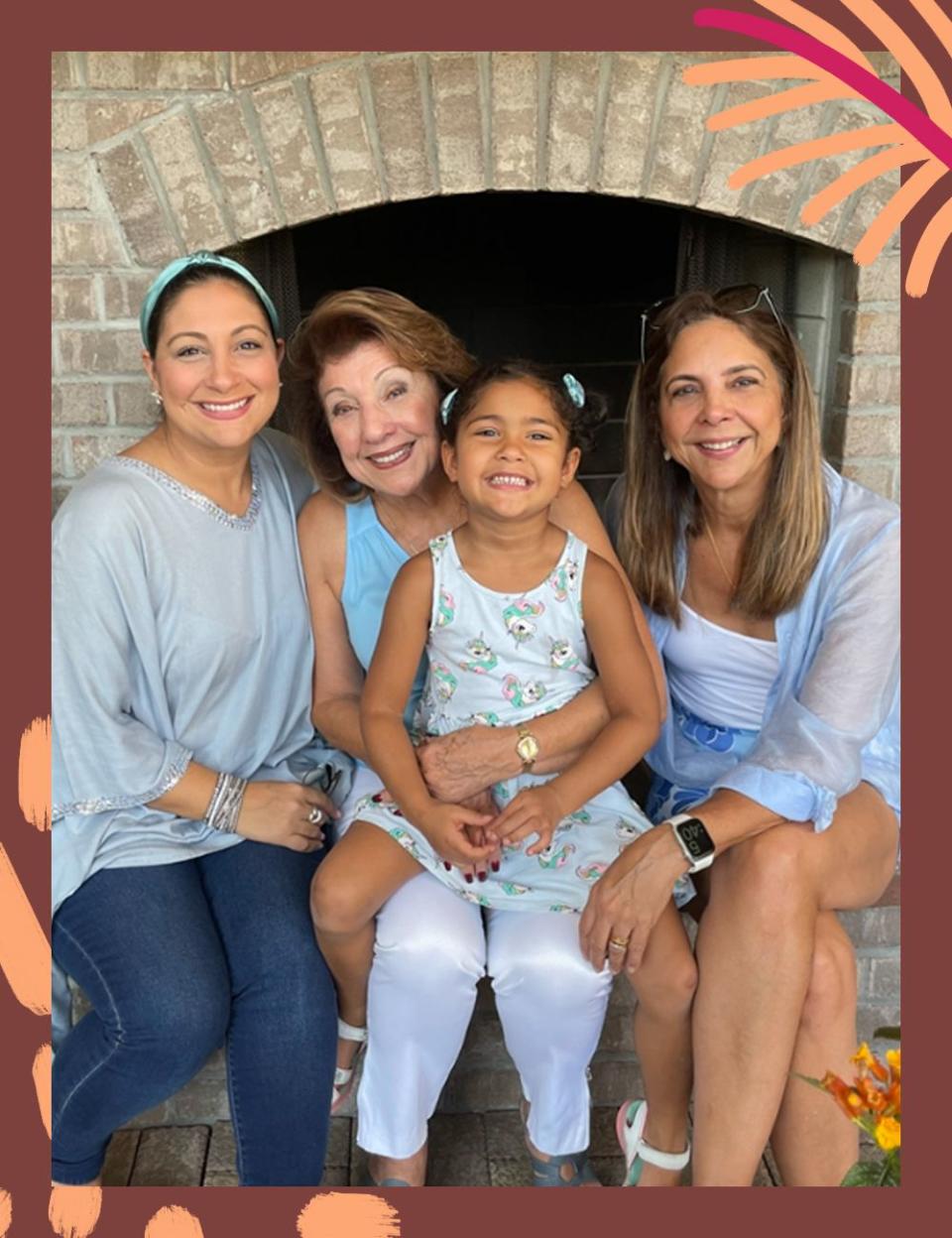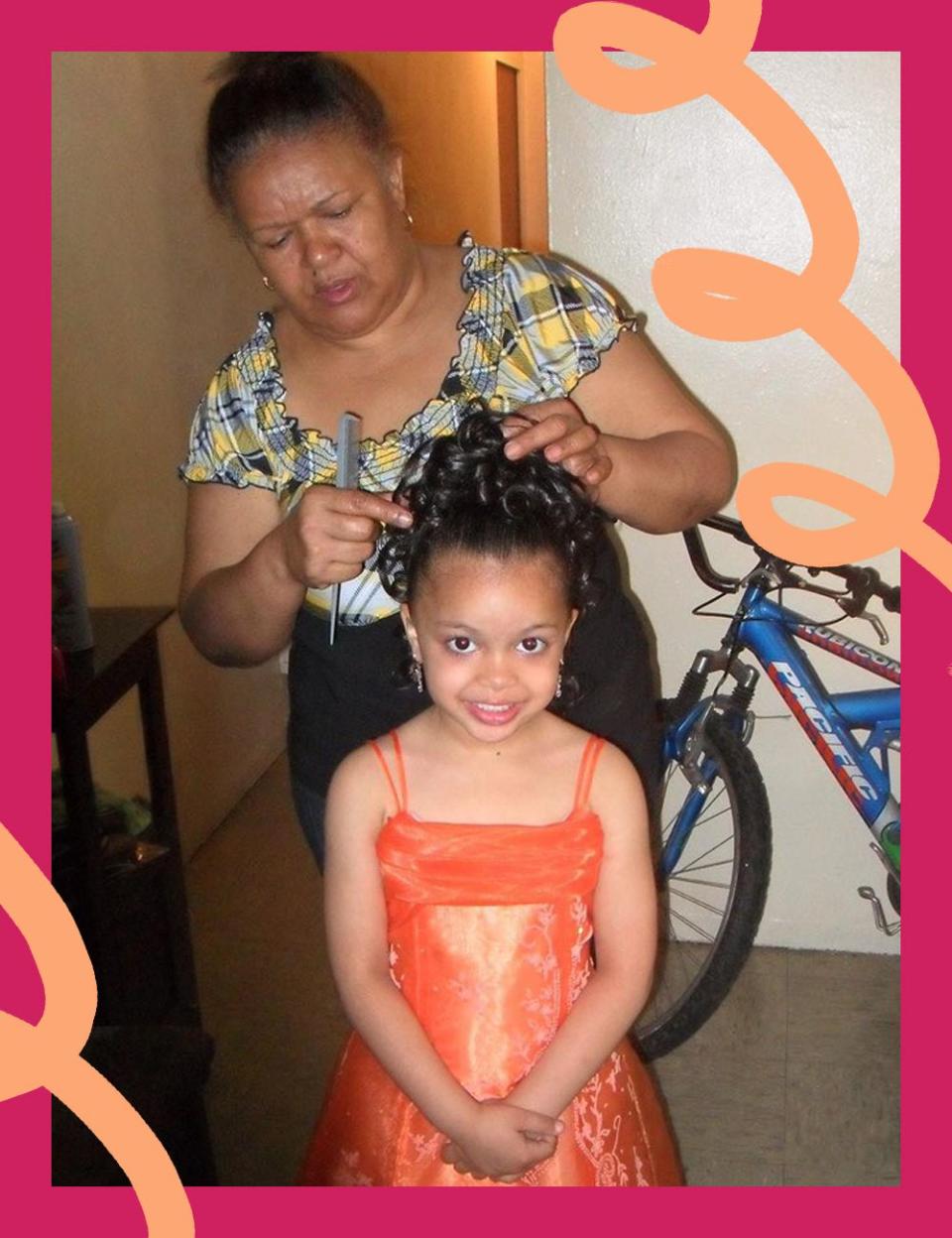What It Means to Be an Abuela in 2022

My Cuban grandmother, a.k.a. Abuela, had a beloved yellow canary named Tom Jones who was her constant companion, living 18 years, a seemingly magical amount of time for a bird that weighed less than an ounce. Because Abuela didn’t speak English, the bird responded to Tom Yones (the “j” in Spanish is silent), and much like his namesake, loved to serenade women. Tom Yones had already passed a few years prior to the time Abuela came to live with us after the death of her husband, a domineering force in her life since she was a teenager. I was in college and living in another state when Abuela moved in with my parents, but I had the good fortune of spending several years under the same roof with her when I returned home after graduation. In this new scenario, I was able to experience a multi-generational household that is the cultural norm for so many in the Latinx community, and increasingly so in the U.S., where 26 percent of Hispanic Americans live in households with individuals from two or more generations (compared to 13 percent of non-Hispanic white families).

In the late 1990s in Georgia, where we lived, there weren’t as many Latinx people as there are now: 10 percent of the population and growing. Back then, our way of cohabitating was an anomaly. My friends’ grandparents mostly lived apart from daughters, sons, and grandchildren. I was never ashamed of our arrangement. I was grateful for my grandmother’s homecooked meals (better than anyone else in the family; I still dream of them), the shared moments watching telenovelas together on the only Spanish language channel available then, and her steady presence. We weren’t overly close, given she didn’t speak English and my Spanish was limited. Plus, her reserved demeanor wasn’t particularly maternal, except when it came to cooking or tending to Tom Jones.
But even without deep conversations or snuggles, I knew she was happy and relaxed in our house, probably for the first time in many decades. I was happy she was there, too. I liked being able to practice Spanish with her, and sharing a home with her was an affirmation of our cultural traditions in the same way listening to Celia Cruz, praying to saints, or eating her picadillo (a savory ground beef stew) bonded me to my Latinidad.
In the era of Covid, I’ve been thinking a lot about my grandmother, wondering what things would be like if she was around, which got me wondering how the role of the Latinx grandmother has changed over the decades she’s been gone. With the increasing economic and social challenges facing the country (and devastating the Latinx community) simultaneously being met with desire for multigenerational solutions (a recent encore.org and University of Chicago survey shows that 32 percent of Latinx people want to work across generations to improve society), how have these anchoring familial relationships evolved to meet the moment? To find out, I asked several Latinas I know to interview the abuelas in their lives. As it turns out, abuelas are still the sages of food and traditions, but the ones I spoke to have adapted in modern ways as they pass on heritage, from deploying technology to encouraging self-care, respecting disappearing dialects, and supporting Latinx entrepreneurship.
Putting a Spin on Tradition
“Abuelas are the roots of the family,” explains Juanita Cantu, a grandmother from San Antonio with 15 grandkids and two great grandkids. “A mother provides daily discipline, teaches values, prepares a child for the future, whereas the grandmother is there to support, provide love, and celebrate who we are and where we come from.” Cantu grew up in Mexico before moving to Texas where she raised five children. At 73, she is intentional about what she sees as a critical aspect of her abuela role, especially since her family lives in the U.S. “As long as I’m alive, I’m here to share our Latino culture with them,” she says.

For Cantu, holidays provide those opportunities, whether it’s a tamalada party in December where the whole clan gets together to make 40 dozen tamales for Christmas and New Year’s, or visiting the cemetery and making an altar to loved ones for Día de los Muertos. During Covid, getting together was difficult, so Cantu used the available tools. When her ex-husband died, the family from the U.S. and Mexico convened over Zoom at her direction. “We did the Novenario every day, and it worked so well,” she says of the Catholic ritual in which individuals pray over a rosary for nine days to release a soul from purgatory. For Cantu, whose abuela taught her how to do the Novenario, it’s as much of a religious exercise as it is yet another way to continue to share her family’s past with the next generation.
Paving the Way to a Healthy Future
For Diana Derrick, a mom of three and abuela to two young girls, the farm fresh diet provided by her mother, who grew up on a ranch in northern Mexico, has proven to be pathway for connection with her grandchildren today.

“The dietary influence of the ranch experience extended to my mother’s choice of food for us,” says 60-year-old Derrick. “We didn’t eat a lot of meat in my family; we’d eat whatever was grown, which was mostly vegetables and roots. Eating healthy was something I learned early on.” Among the traditional staples of the family kitchen were corn tortillas and pinto beans, a plant-centric diet she later imparted to her children. In fact, one of Derrick’s daughters now oversees Plant Futures, a plant-based food program she founded at UC Berkeley, and is a leading voice on plant-based food systems—information she now shares with her grandchildren.
“When my granddaughters are with me, I try to limit processed foods,” says Derrick. “I’ll use mini tortilla makers to make preparing the food fun and educational for them.” It’s an important nutrition strategy considering the Latinx community in the U.S. is predisposed to negative health outcomes including type 2 diabetes, which we are more than twice as likely to have than non-Hispanic white people. Derrick’s diet, she says, is also a form of holistic self-care that includes prioritizing mental and physical wellbeing, aspects of health care that she feels weren’t supported when she was growing up.
“My grandmothers never wore shorts and wouldn’t have dreamt of going into a gym, which could be generational as much as cultural,” she says. “For my grandchildren, I heavily promote self-care, including things like exercise and yoga, which could have been seen negatively by my parents and grandparents as being selfish.”
Embracing New Roles and Diverse Identities
As the owner of a leading communications agency and printing company in Atlanta, Monica Maldonado, a 59-year-old mother of two and grandmother of two, understands the value of health for sustaining the demanding American pursuit of having it all: family, career, friends, community. “It took me a while, but I realized you can’t have it all, at least not at the same time and not without asking for support,” says Maldonado, who grew up in Colombia when women weren’t expected to work outside the home. When Maldonado moved to the U.S. and eventually opened up her business, her mother stepped in to help her run the company and care for her two children. Today, Maldonado does the same for her daughter, who leads a large and fast-growing chamber of commerce.
“My mother helped me raise my children, and now I am doing the same, because we understand the importance of entrepreneurship but also family,” she says. It’s exactly that “it takes a village” approach that Latinx people may increasingly lean on for support as they continue to outpace other segments for starting new businesses. “That abuela you see in Encanto? That’s not my reality,” says Maldonado. “Today, many abuelas have a busy job while also being the one that is the conduit of traditions and culture.”

Last year’s Encanto—a box office animated hit that celebrated Latinx culture through the magical history of a multigenerational family—also put front and center the racial diversity of our families at a time when many are increasingly identifying as non-white. According to the 2020 census, the percent of Latinx people who identified their race as “other” rose from 37 percent in 2010 to 42 percent, and those who identified as “two or more races” increased from 6 percent to 33 percent.
Maldonado, whose grandchildren’s father is multi-racial, sees progress in accepting a plurality of identities in the community. “Growing up in Colombia, I wasn’t exposed to much diversity; everyone looked like me, or so I thought,” she says. Her school-age grandchildren in Georgia are experiencing a much more inclusive upbringing that both honors and uplifts diversity. “They go to schools with kids from everywhere and all walks of life,” she says approvingly. “I think that’s what makes this country so incredible: being able to interact with people from all over the world.”
Honoring the Afro-Latino Experience

Siriaca Rodriguez was in her early thirties when she moved from the Dominican Republic to the Bronx, where she worked as a hairdresser for four decades. Raising three daughters and one son—or what she affectionately calls her “four hearts”—in New York City, she was determined to share her Latinx heritage with them, especially through her native tongues. “Language is a challenge as we migrate and adapt to new environments,” she says. Rodriguez, whose grandmother was a constant presence in her childhood, grew up speaking both Spanish and Dominican Creole, a dialect that is passed down orally through generations, and is a mix of languages including those from the more than 12.5 million Africans who were enslaved and transported to America. It’s a connection to Rodriguez’s ancestry—one that is traditionally whitewashed in historical narratives and culture past and present—that she made sure her children learned in addition to the language of the colonizers. “The people who speak Spanish are the Spaniards,” she explains. “We speak a Spanish patuá.”
While she was successful in passing on Dominican Creole to her children—her daughter Yelaine is an accomplished artist whose work explores Dominican Creole and Afro-Caribbean themes—it’s proven harder to move beyond Spanish with her grandchildren. “I want to pass it down to them so they can understand it and in turn understand who I am,” she says, though she appreciates how difficult that can be in a busy, noisy world of competing distractions. Still, she persists. “The culture shifts through generations, so you must adapt with them.”

This story was created as part of From Our Abuelas in partnership with Lexus. From Our Abuelas is a series running across Hearst Magazines to honor and preserve generations of wisdom within Latinx and Hispanic communities. Go to oprahdaily.com/fromourabuelas for the complete portfolio.
You Might Also Like